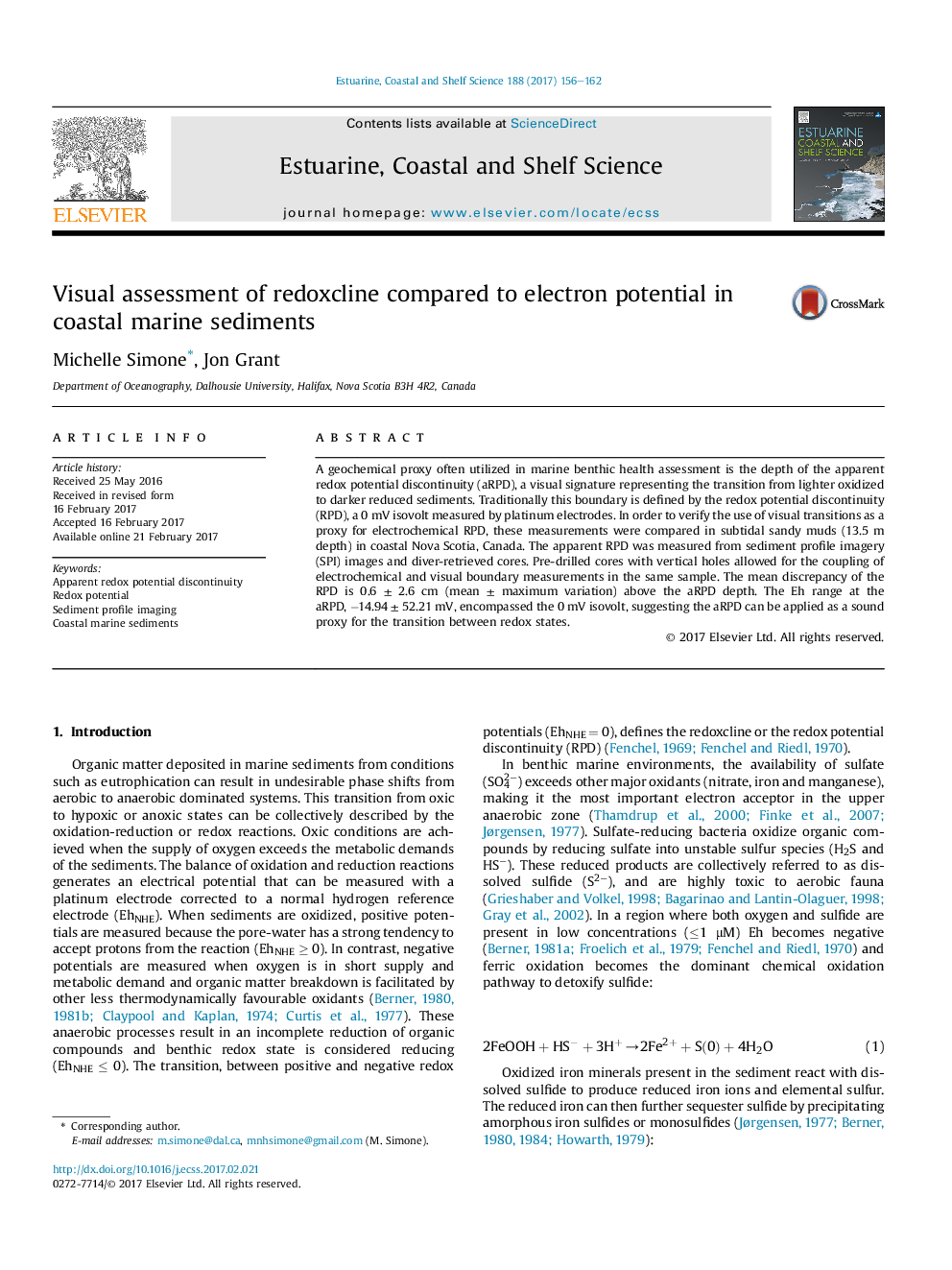| Article ID | Journal | Published Year | Pages | File Type |
|---|---|---|---|---|
| 5765361 | Estuarine, Coastal and Shelf Science | 2017 | 7 Pages |
Abstract
A geochemical proxy often utilized in marine benthic health assessment is the depth of the apparent redox potential discontinuity (aRPD), a visual signature representing the transition from lighter oxidized to darker reduced sediments. Traditionally this boundary is defined by the redox potential discontinuity (RPD), a 0 mV isovolt measured by platinum electrodes. In order to verify the use of visual transitions as a proxy for electrochemical RPD, these measurements were compared in subtidal sandy muds (13.5 m depth) in coastal Nova Scotia, Canada. The apparent RPD was measured from sediment profile imagery (SPI) images and diver-retrieved cores. Pre-drilled cores with vertical holes allowed for the coupling of electrochemical and visual boundary measurements in the same sample. The mean discrepancy of the RPD is 0.6 ± 2.6 cm (mean ± maximum variation) above the aRPD depth. The Eh range at the aRPD, â14.94 ± 52.21 mV, encompassed the 0 mV isovolt, suggesting the aRPD can be applied as a sound proxy for the transition between redox states.
Related Topics
Physical Sciences and Engineering
Earth and Planetary Sciences
Geology
Authors
Michelle Simone, Jon Grant,
